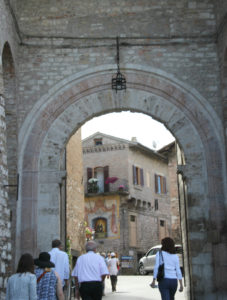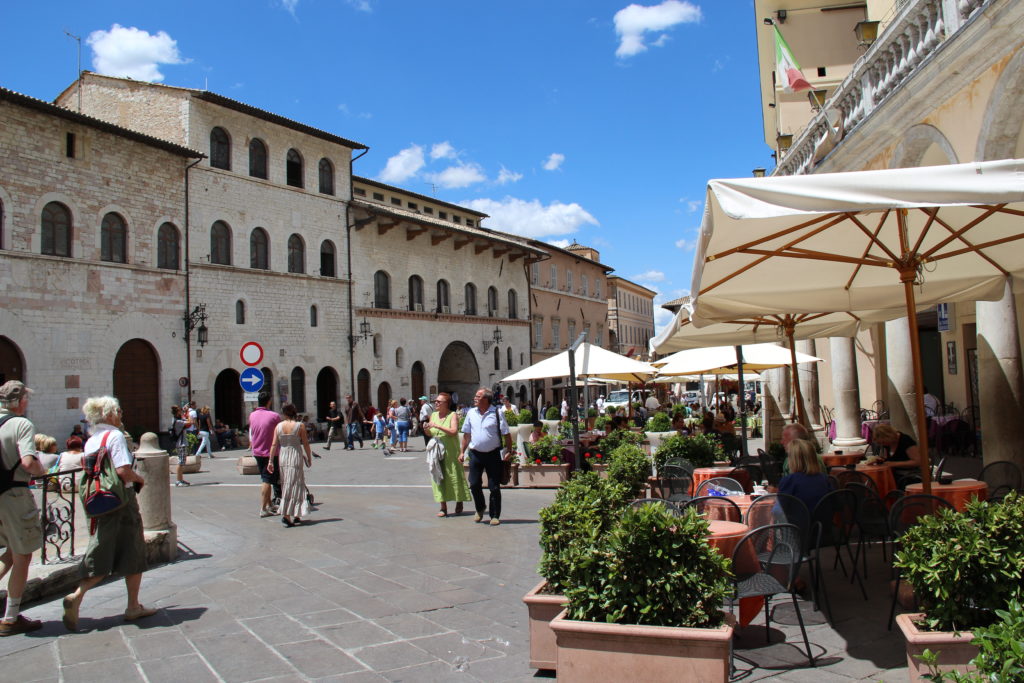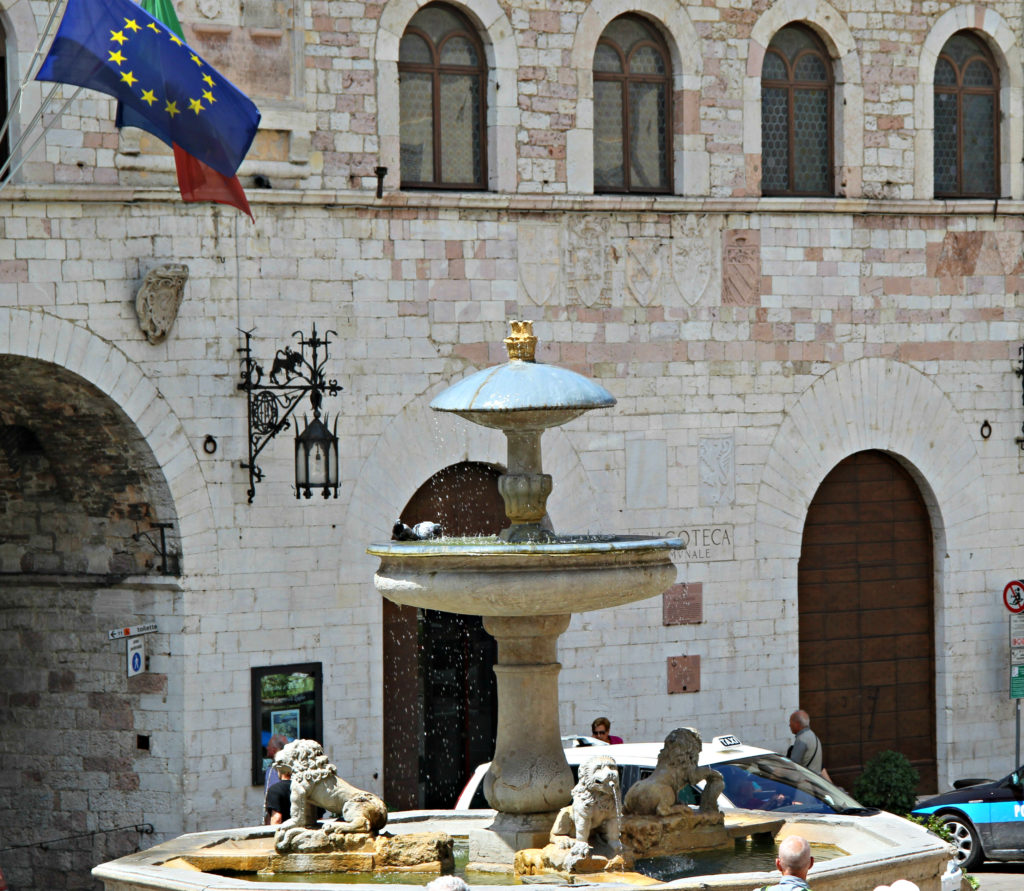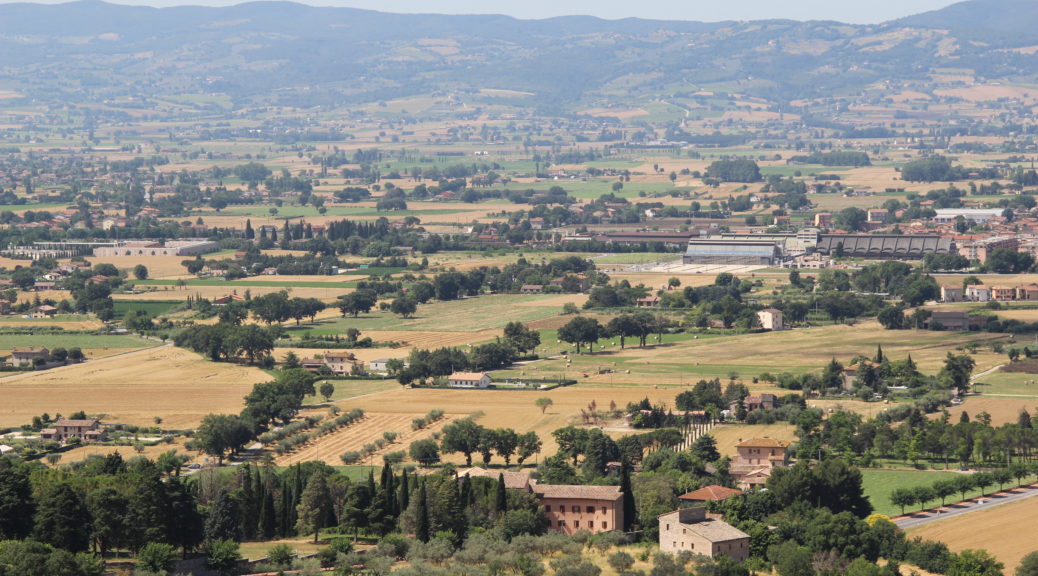
Orvieto and Assisi
We visited several small towns while in Italy, one of which was Orvieto. It sits on rock that is believed to have come from a volcanic eruption. Orvieto is famous for its cathedral, wine and ceramics. These are pictures we took while walking around the town. In the last picture, you will get a glimpse of the cathedral.
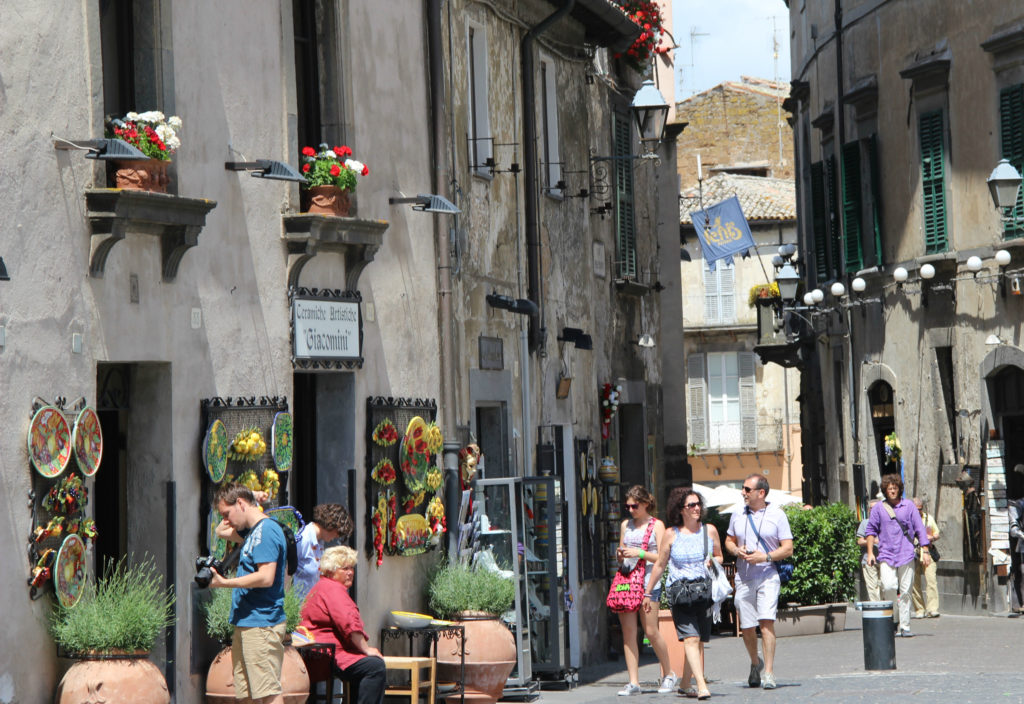
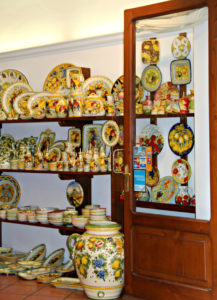

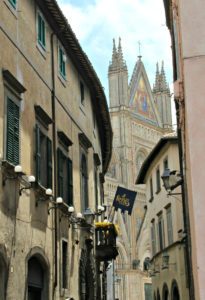
These pictures are of the Duomo of Orvieto. Construction of the cathedral began in 1290, but took over 100 years to complete. Around 1263, a Bohemian priest celebrated a mass near Orvieto. He saw blood drip from a communion wafer. The altar cloth which had blood from the communion wafer was given to the town. The people were encouraged to build a cathedral worthy of this. We saw this cloth which is on display inside the Duomo.
The Duomo has a large rose window which was built in the 1300’s. A sculpture of Christ is in the middle. There are sculptures of the apostles in the niches above the window and sculptures of prophets on the other sides of the window. As you look at the side of the church, you will see alternating rows of white and black marble. The gables hold mosaic pictures.
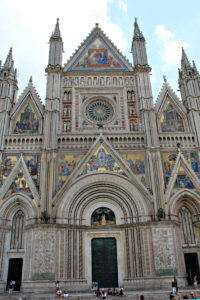
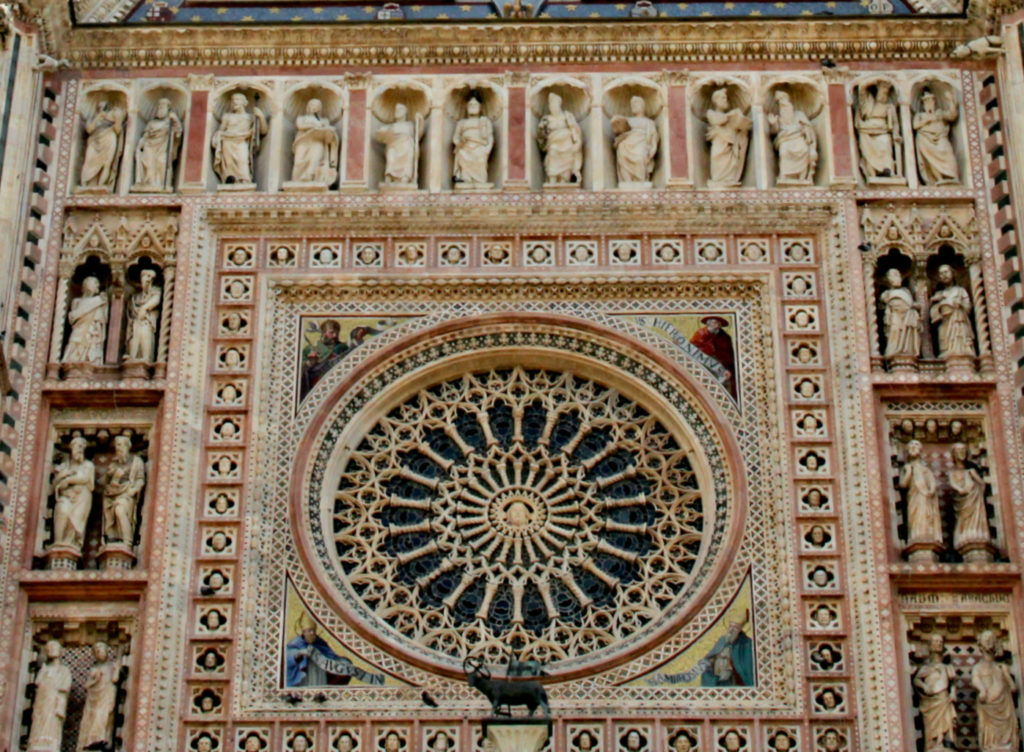
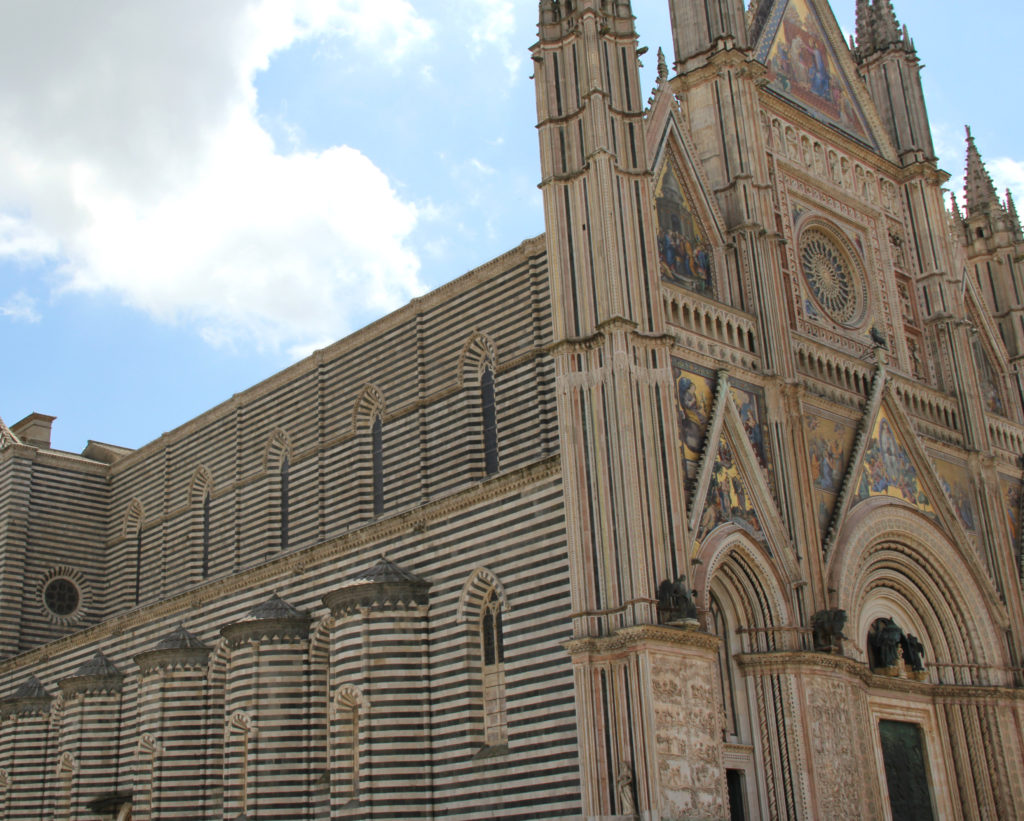
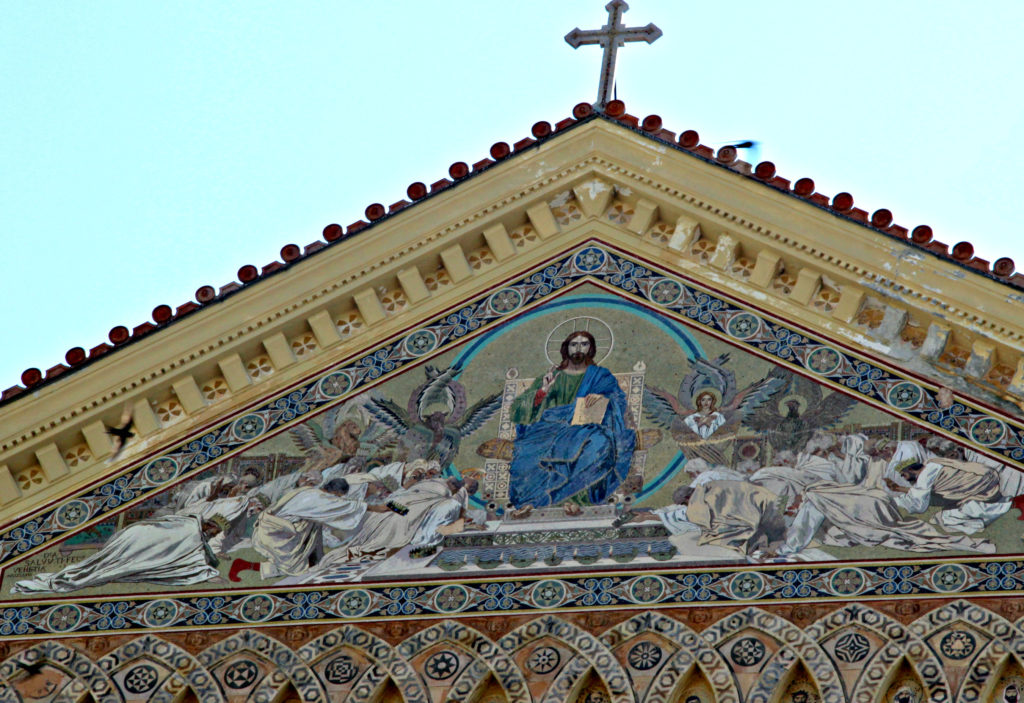
There are two bas reliefs on both sides of the central bronze door of the Duomo. These tell the story of mankind from the beginning of time to the end of time. The first picture below, with the people in the foreground, will give you a sense of how large the bas reliefs are. The next picture is a close-up of one of the squares in the bas relief. The bronze door portrays the mercies of Christ. The close-up shows someone giving water to a thirsty man. The use of pictures to tell Biblical stories was important because so many people could not read. I have also included a detail of the mosaic work on the facade and a winged lion. The lion is one of 14 symbols of evangelists on the cathedral, this one representing St. Mark.


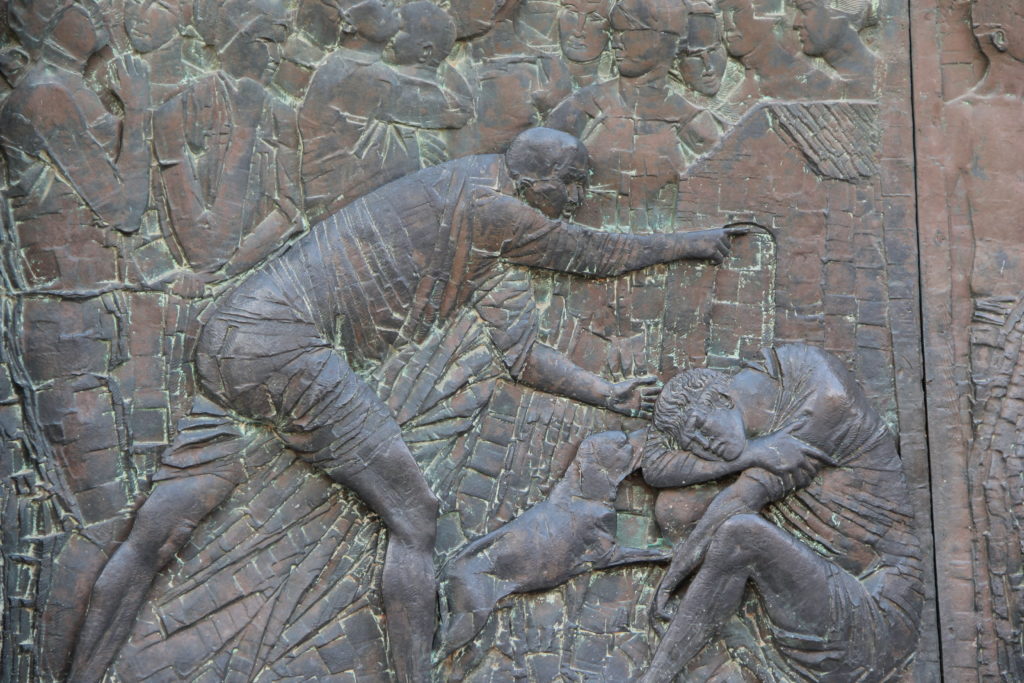
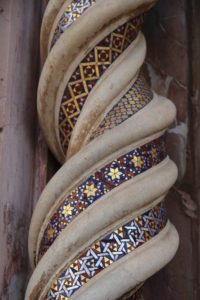

We also visited Assisi. We drove by beautiful farmland and as we got closer to Assisi, passed the Saint Mary of the Angels Church. It was built in the 1500’s and 1600’s, encasing a small 9th Century church, the Porziuncola. A gold-plated statue, Madonna of the Angels, was added to the church in 1930. Saint Mary of the Angels is well-known because this is where St. Francis vowed to live in poverty, beginning the Franciscan movement. St. Francis also died here in 1226. As we approached Assisi, we also saw the Rocca Maggiore Castle. This was once part of a wall system that surrounded Assisi. The tall tower in the center of the of the castle is where the castle inhabitants lived.
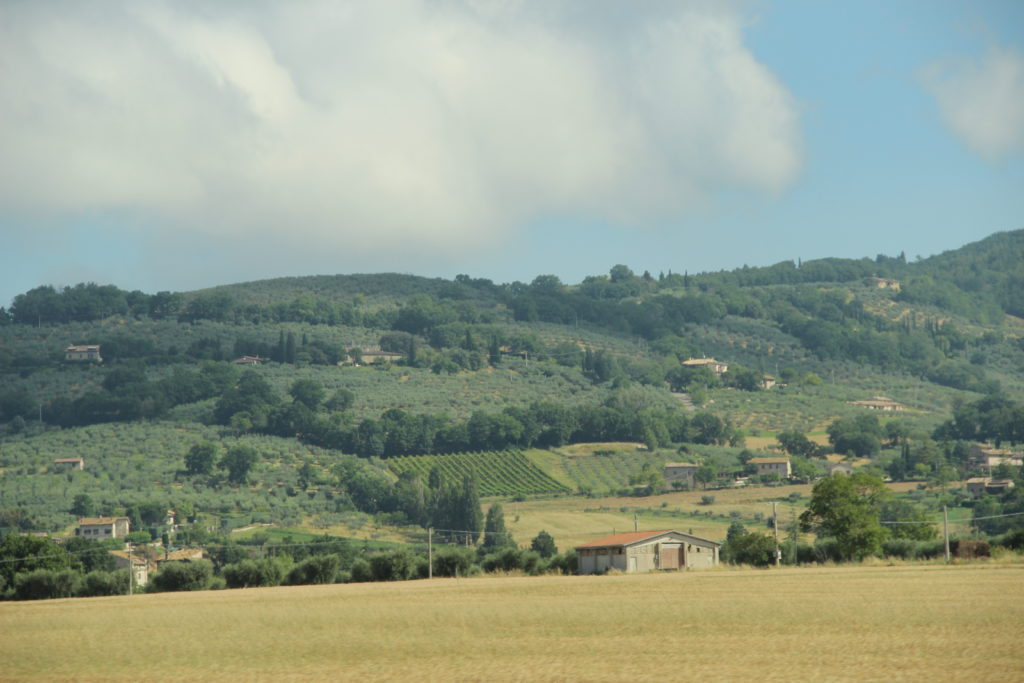
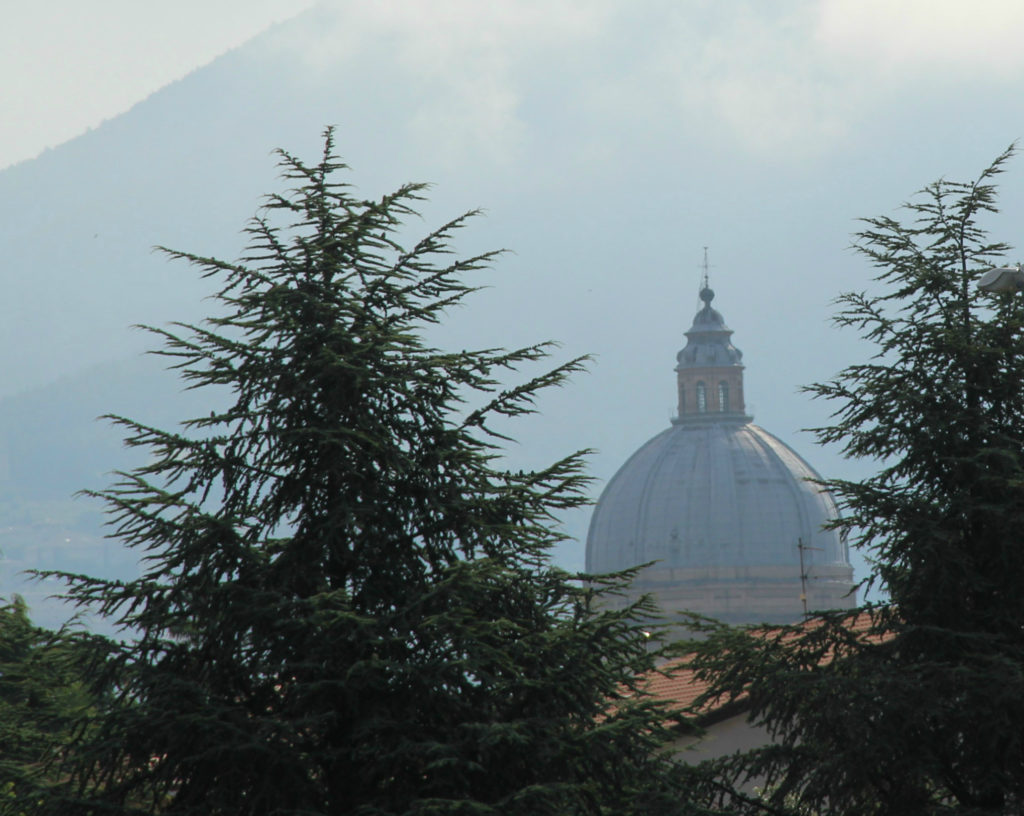
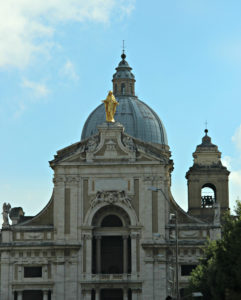
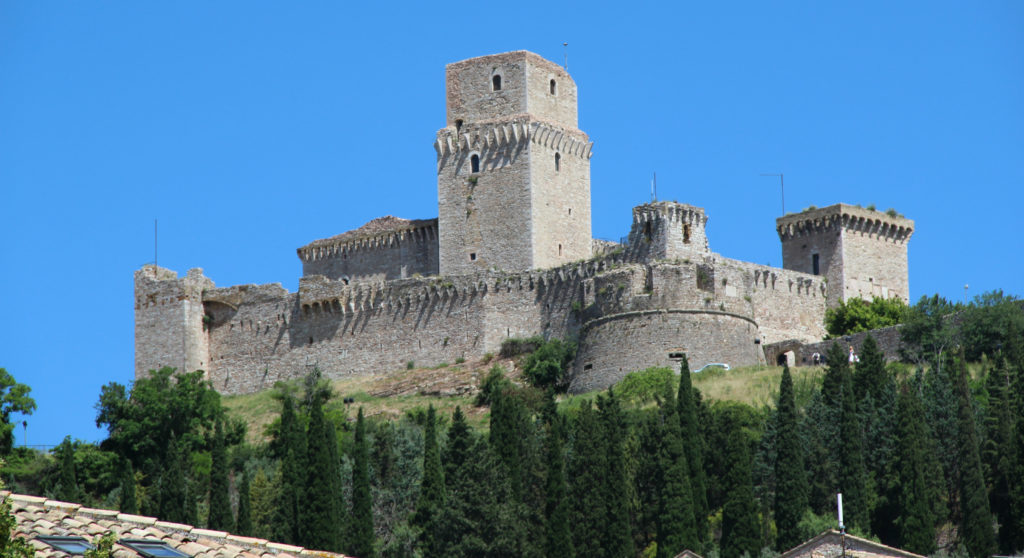
One of the highlights of our visit to Assisi was the Basilica of St. Francis. It was designed by one of his followers. It is actually two churches, the Basilica Superiore (or the upper Basilica) and the Basilica Inferiore (or the Lower Basilica). St. Francis’ body was buried in secret in the unfinished church in 1230. It was discovered in 1818. When we visited, we were able to see the crypt. Two monks stand in watch near the crypt. We were unable to take pictures inside the church.
The pictures below look up at the Basilica first as we approached Assisi and then after we had entered Assisi. The third picture shows the Lower and Upper Basilicas. The entrance to the lower one can be seen on the left of this picture. The fourth picture is the facade of the Upper Basilica. The final picture is a close up of the rose window in the Basilica.


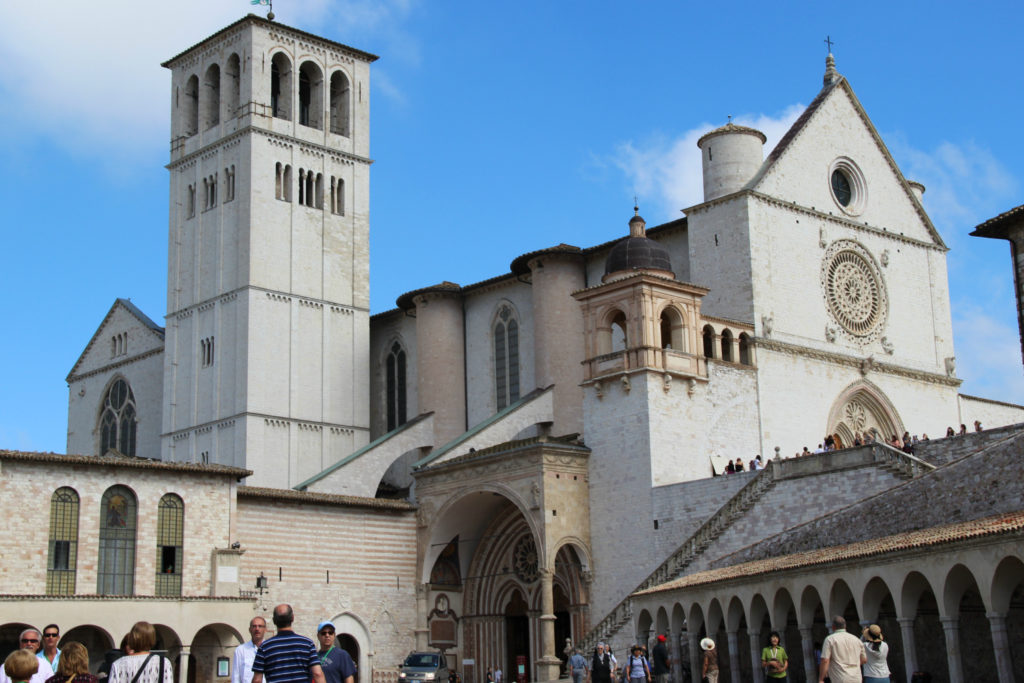

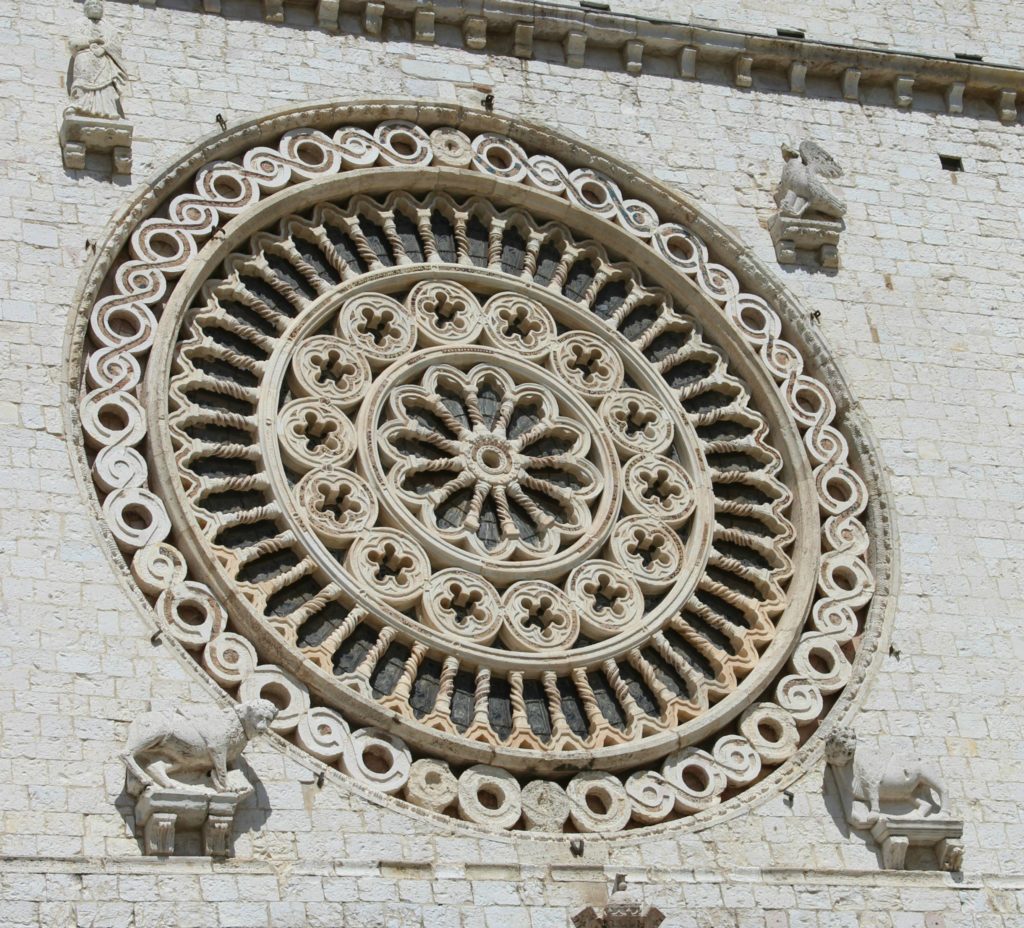
We had beautiful views of the countryside when standing outside the Upper Basilica. In the first picture you can see the dome of the Saint Mary of the Angels Church. The last picture is of the stairs that took us back to the main part of the town.
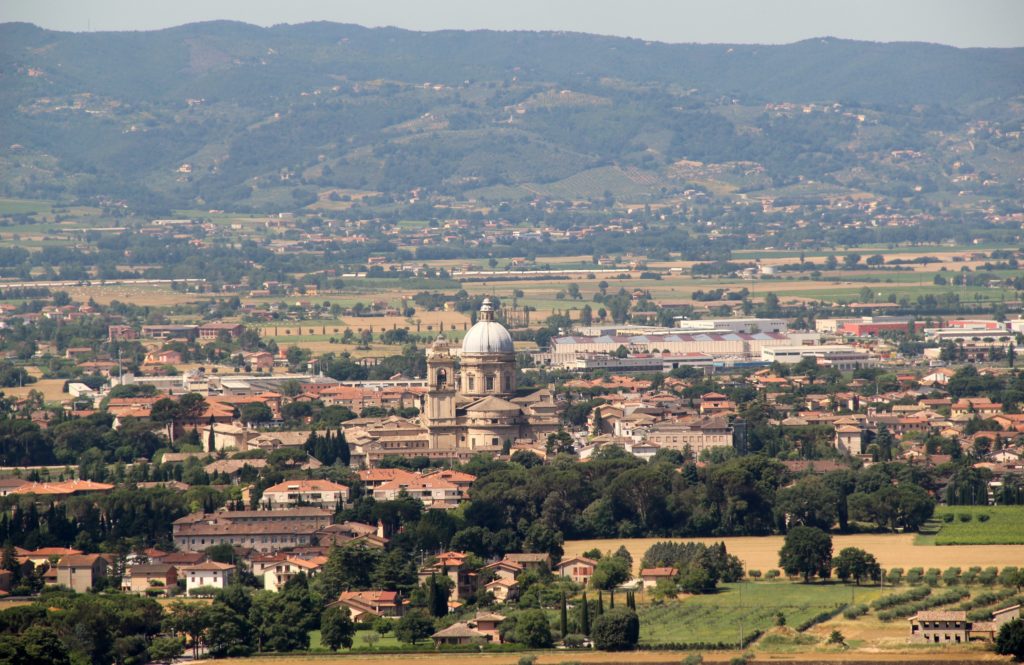
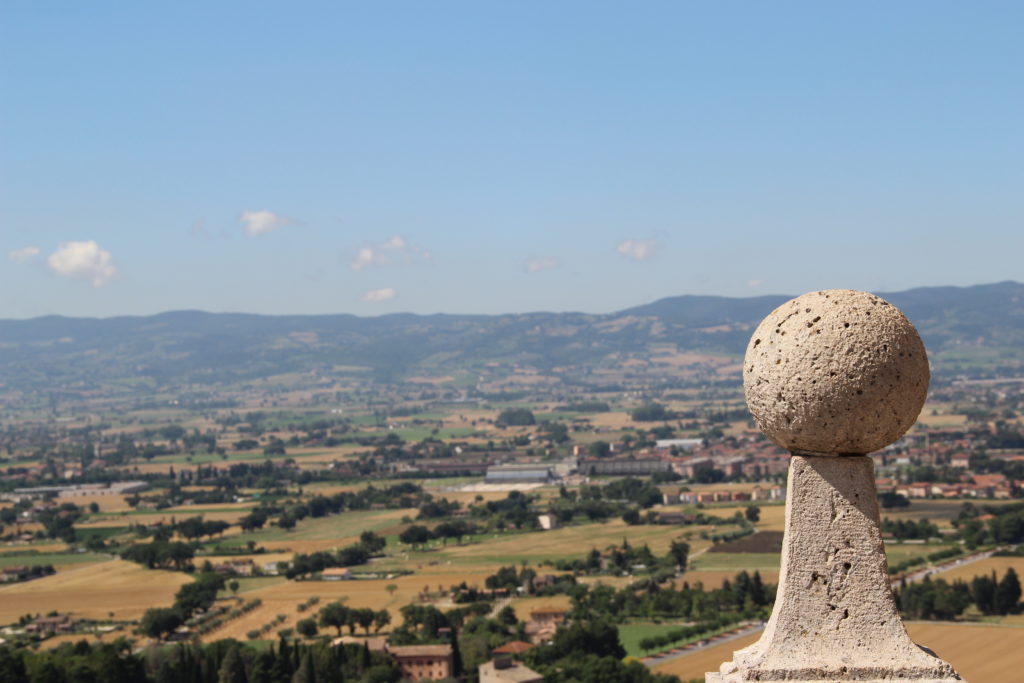
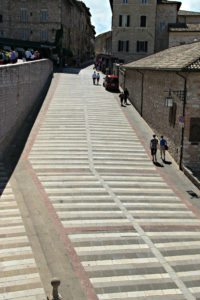
This is the Basilica of Saint Clare, also located in Assisi, which is dedicated to St. Clare. She was a follower of St. Francis and founded the Order of Poor Ladies which today is known as the Order of St. Clare. Construction of the church began in the 1200’s. Her remains are buried under the high altar. The exterior of the church has stripes of white and pink stone. Both sides of the church have supporting arches.
Also pictured is what was originally the Roman Temple of Minerva (last two pictures in this section). It was built in the 1st Century BC. In 1539 AD, Pope Paolo visited Assisi and ordered that the temple be restored and dedicated to the Virgin Mary. It then was renamed Santa Maria Sopra Minerva (which is translated St. Mary over Minerva). The facade of the original temple was preserved. The altar in the church is also pictured.
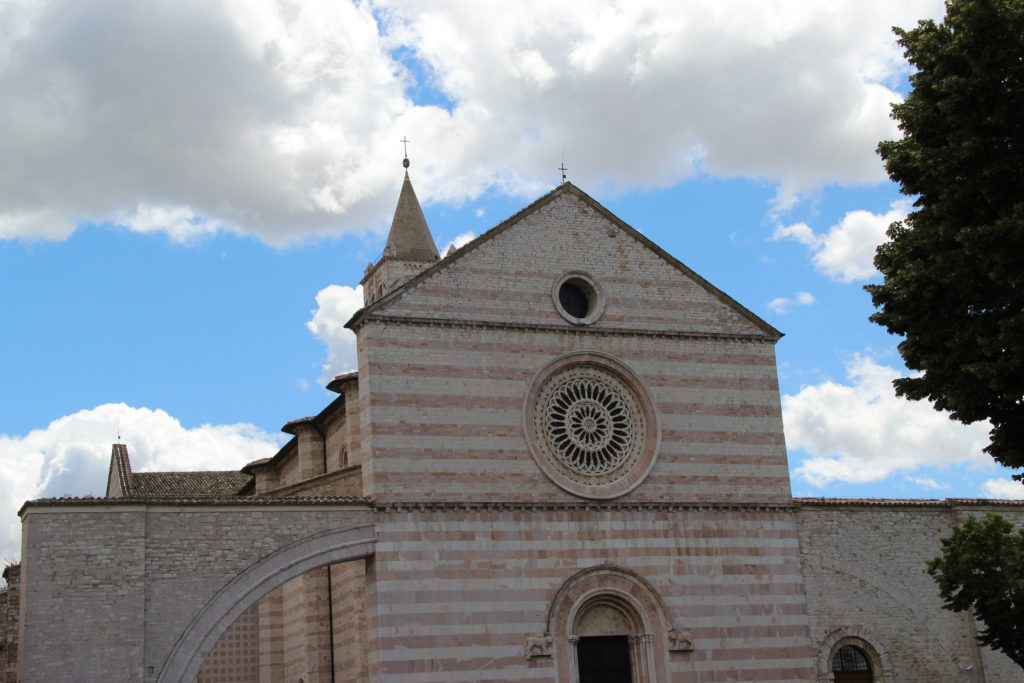
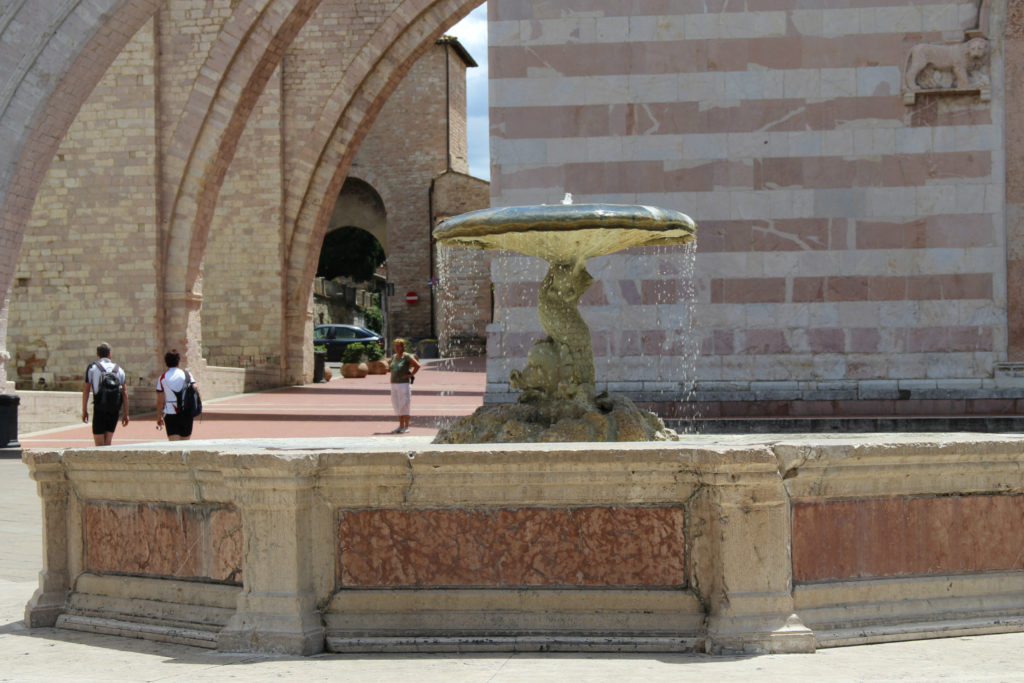
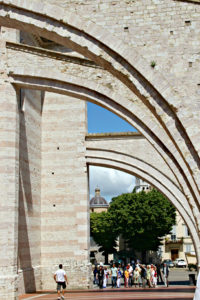
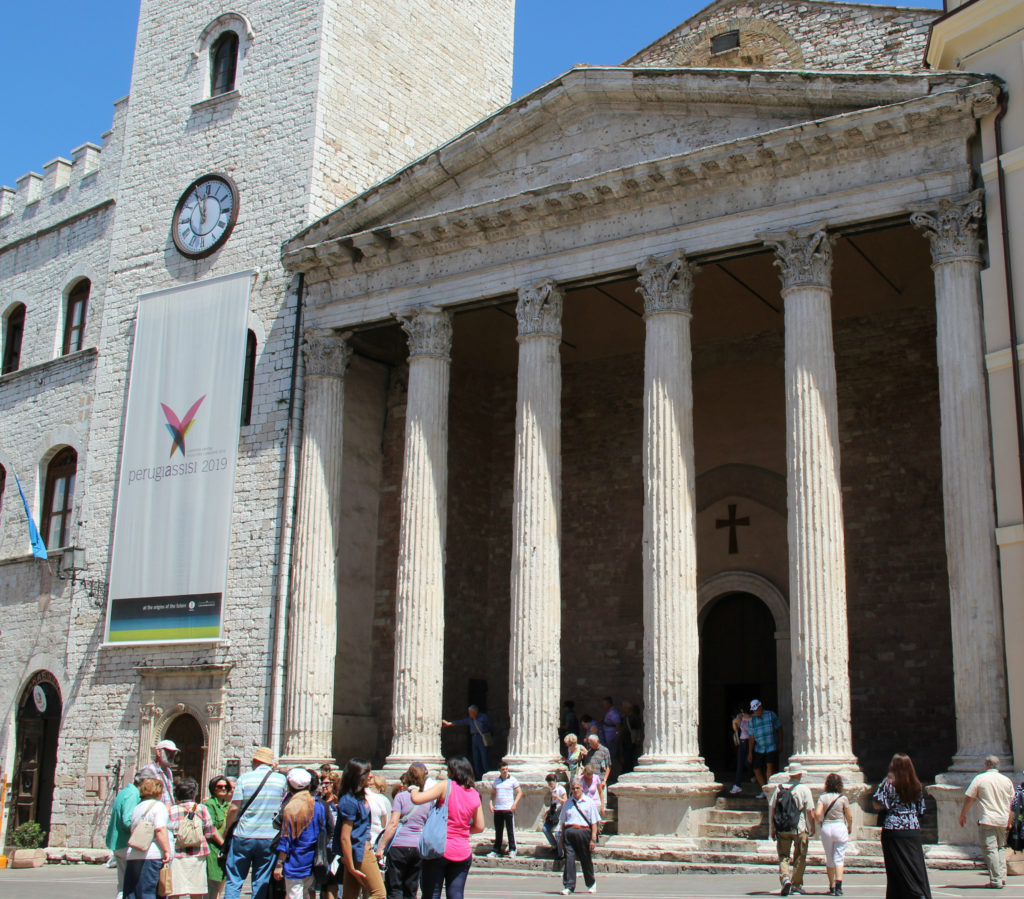
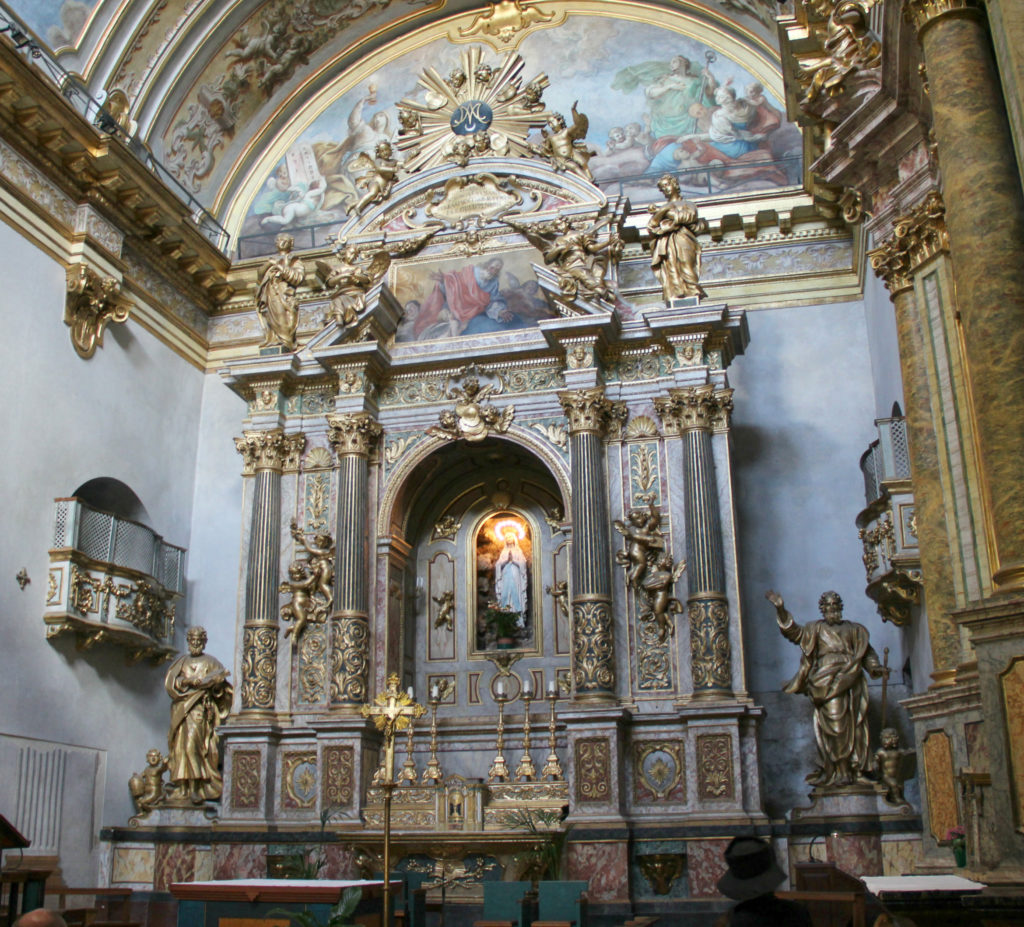
We found Assisi to be a charming town and wish we could have spent more time here. We did have some free time to explore and have lunch. The medieval history was very evident throughout the town. It was a very enjoyable day.
